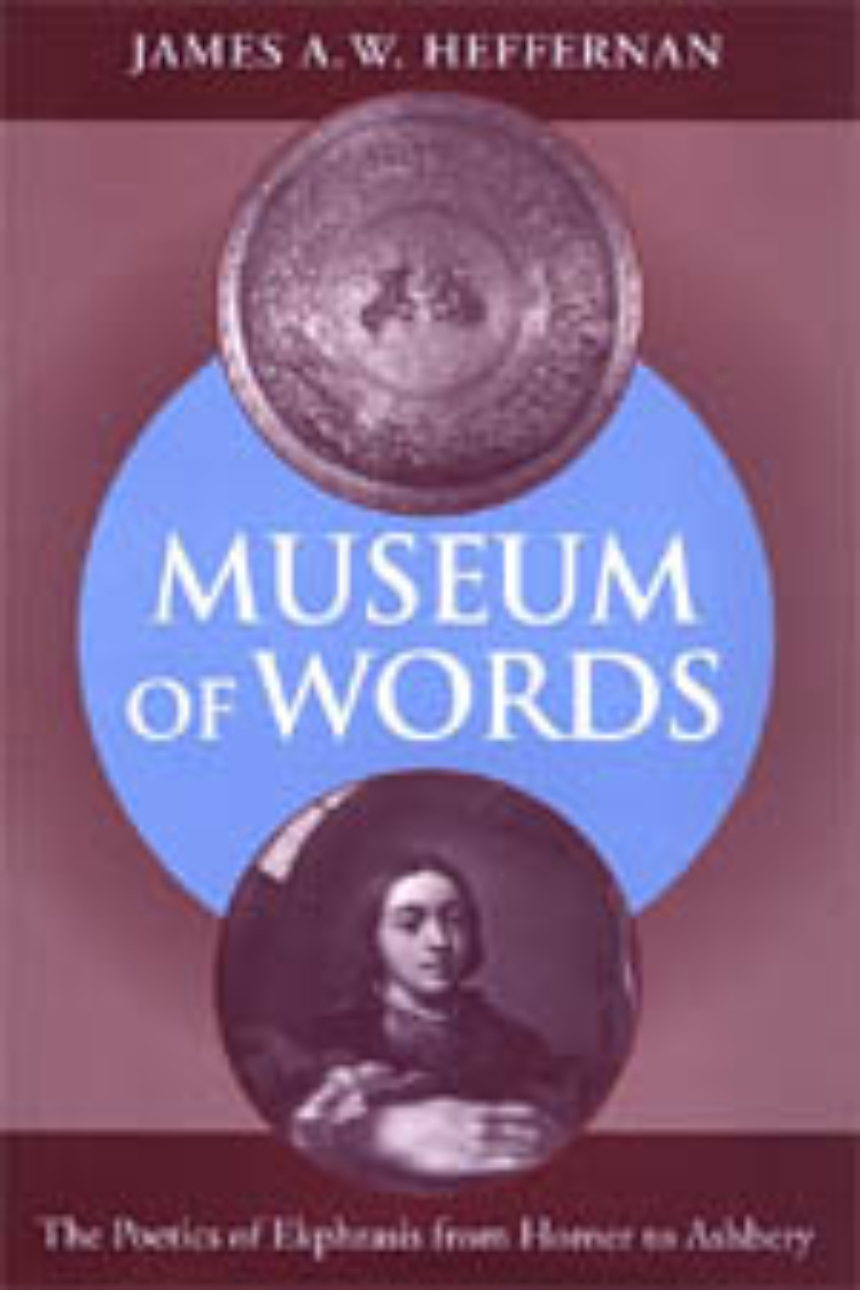Museum of Words
The Poetics of Ekphrasis from Homer to Ashbery
Ekphrasis is the art of describing works of art, the verbal representation of visual representation. Profoundly ambivalent, ekphrastic poetry celebrates the power of the silent image even as it tries to circumscribe that power with the authority of the word. Over the ages its practitioners have created a museum of words about real and imaginary paintings and sculptures.
In the first book ever to explore this museum, James Heffernan argues that ekphrasis stages a battle for mastery between the image and the word. Moving from the epics of Homer, Virgil, and Dante to contemporary American poetry, this book treats the history of struggle between rival systems of representation. Readable and well illustrated, this study of how poets have represented painting and sculpture is a major contribution to our understanding of the relation between the arts.
In the first book ever to explore this museum, James Heffernan argues that ekphrasis stages a battle for mastery between the image and the word. Moving from the epics of Homer, Virgil, and Dante to contemporary American poetry, this book treats the history of struggle between rival systems of representation. Readable and well illustrated, this study of how poets have represented painting and sculpture is a major contribution to our understanding of the relation between the arts.
Table of Contents
List of Illustrations
Acknowledgments
Introduction
1. Homer, Virgil, Dante
A Genealogy of Ekphrasis
I. Homer: A Shield Sculpted in Words
II. Virgil: Re-Imagining the Shield
III. Visible Speech: The Envoicing of Sculpture in Dante’s Purgatorio
2. Weaving Rape: Ekphrastic Metamorphoses of the Philomela Myth from Ovid to Shakespeare
I. Philomela’s Graphic Tale
II. Verbalized Depictions of Rape in the Ancient Novel
III. Ekphrasis and Rape from Chaucer to Spenser
IV. The Painted Rape of Troy in Shakespeare’s Lucrece
3. Romantic Ekphrasis
Iconophoria, Iconophilia, and the Ideology of Transcendence
I. Wordsworth’s "Peele Castle"
II. "All breathing human passion far above": Keats and the Urn
III. Disintegrating Sublimity, Petrified Beauty: Shelley’s "Ozymandias" and "Medusa"
IV. Ideality and Fixity: Byron on Sculpture
4. Modern and Postmodern Ekphrasis
Entering the Museum of Art
I. Gaze and Glance in Browning’s "My Last Duchess"
II. The Museum in Auden’s "Musée"
III. The Breughel Museum of William Carlos Williams
IV. The Museum-Goer in the Mirror: Ashbery’s "Self-Portrait"
Notes
Works Cited
Acknowledgments
Introduction
1. Homer, Virgil, Dante
A Genealogy of Ekphrasis
I. Homer: A Shield Sculpted in Words
II. Virgil: Re-Imagining the Shield
III. Visible Speech: The Envoicing of Sculpture in Dante’s Purgatorio
2. Weaving Rape: Ekphrastic Metamorphoses of the Philomela Myth from Ovid to Shakespeare
I. Philomela’s Graphic Tale
II. Verbalized Depictions of Rape in the Ancient Novel
III. Ekphrasis and Rape from Chaucer to Spenser
IV. The Painted Rape of Troy in Shakespeare’s Lucrece
3. Romantic Ekphrasis
Iconophoria, Iconophilia, and the Ideology of Transcendence
I. Wordsworth’s "Peele Castle"
II. "All breathing human passion far above": Keats and the Urn
III. Disintegrating Sublimity, Petrified Beauty: Shelley’s "Ozymandias" and "Medusa"
IV. Ideality and Fixity: Byron on Sculpture
4. Modern and Postmodern Ekphrasis
Entering the Museum of Art
I. Gaze and Glance in Browning’s "My Last Duchess"
II. The Museum in Auden’s "Musée"
III. The Breughel Museum of William Carlos Williams
IV. The Museum-Goer in the Mirror: Ashbery’s "Self-Portrait"
Notes
Works Cited
